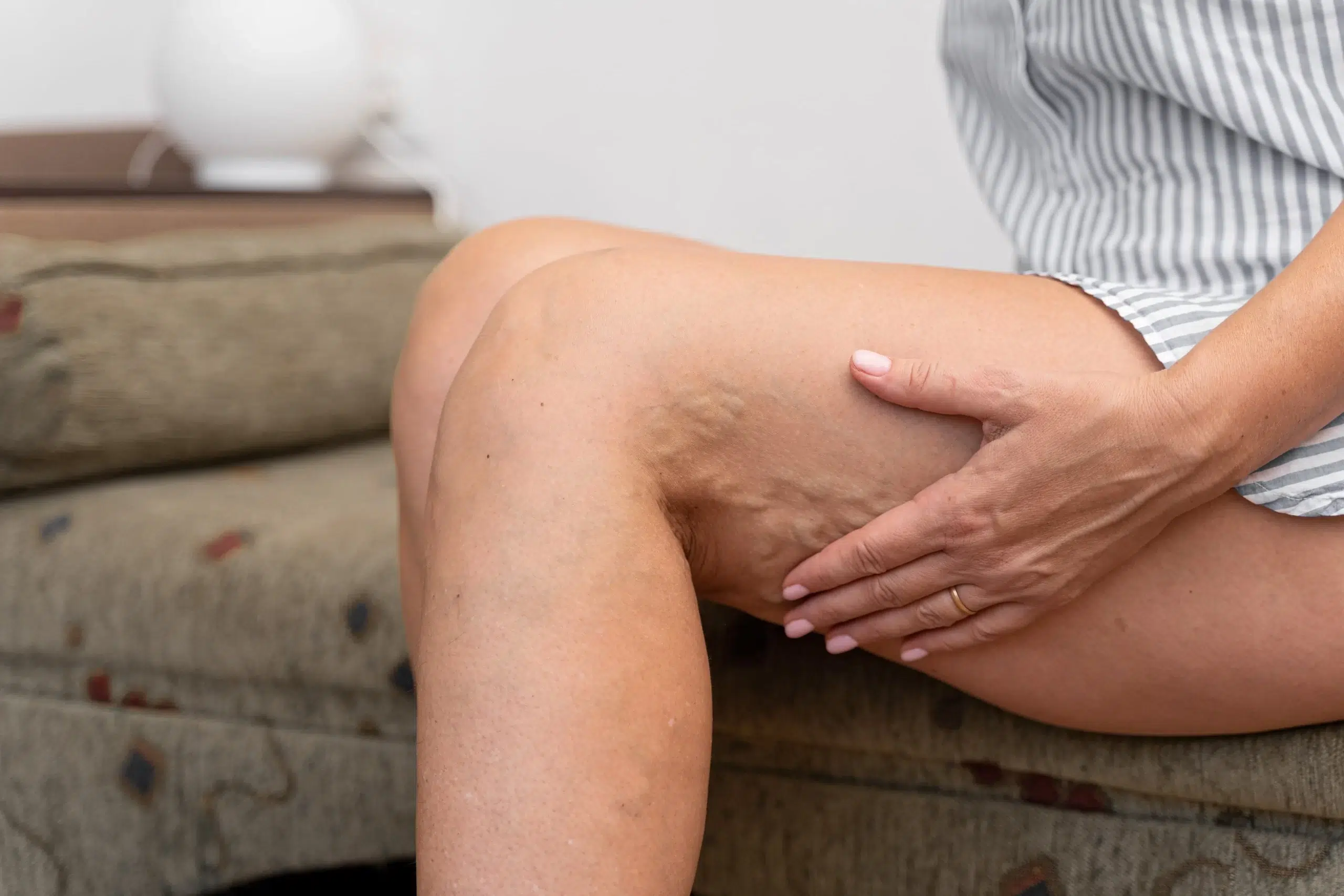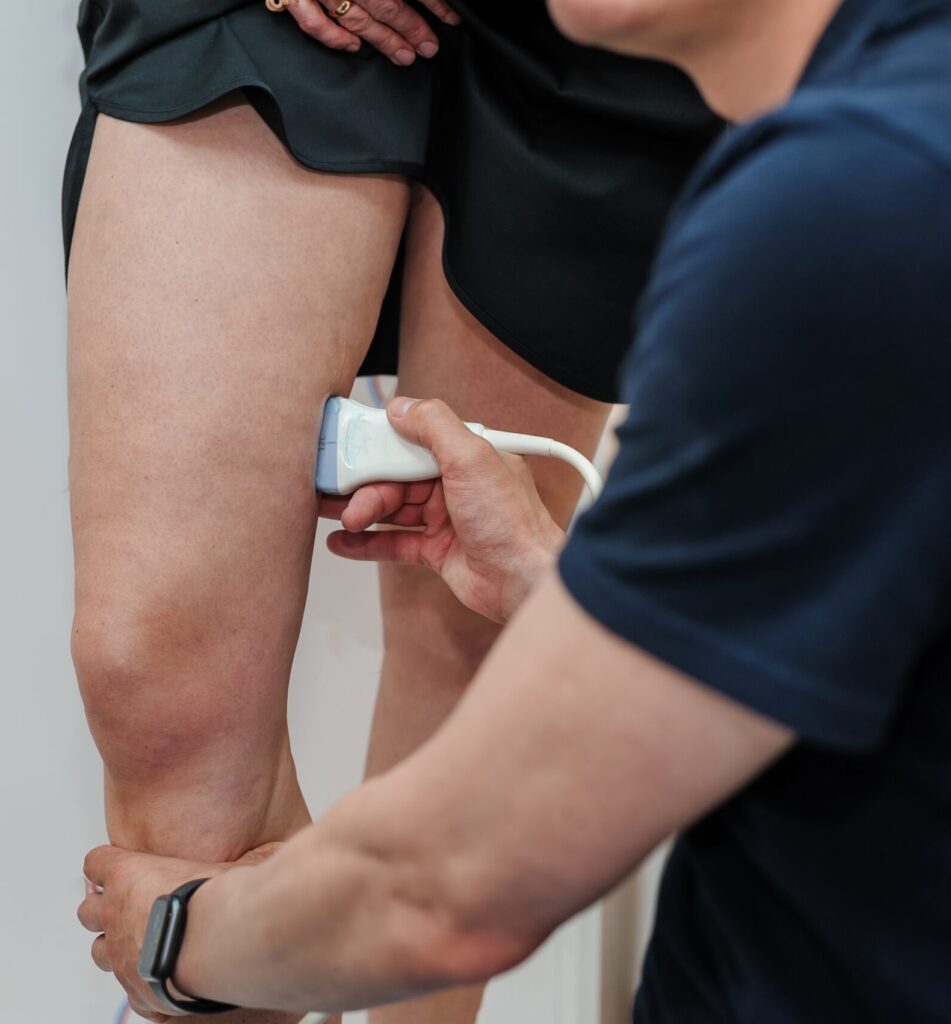
Leg Varicose Veins
Healthy Legs, Confident Steps
Rediscover
Comfort & Confidence
Experiencing varicose veins can be more than just a cosmetic concern—it can affect your comfort, confidence, and overall quality of life. At our vein clinic, we understand the frustration of dealing with aching, swollen, or heavy legs and the impact these symptoms can have on your daily activities. Our personalized treatments are designed not only to address the visible veins but also to improve your circulation, relieve discomfort, and restore your confidence. Let us help you take the first step toward healthier, pain-free legs and a renewed sense of freedom.
There is an Alternative to Vein surgery
Times have changed, and so have the ways we treat varicose veins. If you’ve ever heard stories from your mother or father about the discomfort and long recovery periods following vein stripping surgery, you’ll be relieved to know that modern medicine offers gentler alternatives. Today’s treatments are designed with your comfort in mind, focusing on minimally invasive procedures that don’t require a hospital stay or extended downtime. These advanced techniques not only effectively treat varicose veins but also allow you to resume your daily life almost immediately—no need to endure weeks of rest and recovery.
At our clinic, we understand that living with varicose veins can be frustrating and even painful. That’s why we’re committed to providing solutions that fit seamlessly into your lifestyle. Treatments like sclerotherapy, endovenous laser therapy, and other minimally invasive options are performed in a comfortable, outpatient setting. With these modern advancements, you can literally walk in for treatment and walk out with healthier veins and renewed confidence, all without the long recovery that was once unavoidable. It’s our goal to make vein care accessible, effective, and as stress-free as possible, so you can get back to feeling like yourself again.

What are leg varicose veins?
Leg varicose veins are more than just visible, twisting veins on your legs—they’re a sign that your veins are struggling to carry blood back to your heart efficiently. This can happen when the tiny valves inside your veins weaken, causing blood to pool and the veins to swell. For many, varicose veins bring not only cosmetic concerns but also physical discomfort, like aching, heaviness, and swelling in the legs. They can even make everyday activities, like standing or walking, feel challenging.
It’s important to know that varicose veins are a common condition, and you’re not alone in dealing with them. While they can be frustrating, there are modern, effective treatments available that address both the appearance and the underlying issues. With the right care, you can find relief, improve your leg health, and restore confidence in your stride.
These occur due to weak veins and have cosmetic implications for many people. Not to be confused with varicose veins, which are larger and often seen internally.
Causes & symptoms
Varicose veins develop when the small valves in your veins, which are supposed to keep blood flowing in the right direction, become weakened or damaged. This causes blood to pool in your legs, making the veins swell and twist. There are many reasons why this happens, and often it’s not something you can control. Genetics play a significant role, so if your parents or grandparents had varicose veins, you may be more likely to develop them too. Lifestyle factors, like standing or sitting for long periods, pregnancy, aging, and even carrying extra weight, can also contribute. It’s not about blame—it’s about understanding how life and our bodies are connected. Varicose veins can affect more than just how your legs look.
You might feel aching, heaviness, or tiredness in your legs, especially after standing or being on your feet all day. Some people experience swelling, itchy or irritated skin near the veins, or even cramps, especially at night. Over time, these symptoms can make everyday activities feel harder or less enjoyable. If this sounds familiar, know that you’re not alone, and there’s no need to suffer in silence.
These symptoms are common and treatable, and with modern advancements in vein care, relief is closer than ever. At our clinic, we’re here to listen, understand, and work with you to find solutions that improve not only your leg health but also your overall quality of life. There’s hope for a future where your legs feel lighter, stronger, and free from pain—and we’re here to help you take that first step.
leg Varicose Veins Removal
Varicose vein removal is more than just a cosmetic procedure—it’s a step toward healthier, more comfortable legs. Varicose veins can cause discomfort, swelling, and even aching, impacting your quality of life and confidence. Modern treatments are designed to effectively address both the appearance and underlying issues of varicose veins, offering solutions that are minimally invasive with little to no downtime. Whether you’re seeking relief from pain or looking to restore confidence in how your legs look and feel, varicose vein removal can help you achieve lasting results and a renewed sense of freedom.
endovenous laser ablation
Endovenous Laser Ablation (EVLA) is a cornerstone treatment for addressing truncal vein insufficiency, which is often the root cause of varicose veins. This minimally invasive procedure uses laser energy to seal off the diseased vein, redirecting blood flow to healthier veins and alleviating symptoms like pain, swelling, and heaviness.
Sclerotherapy
Sclerotherapy is a minimally invasive treatment for varicose veins, causing veins to collapse and improve blood flow. This quick, outpatient procedure has minimal downtime and is suitable for both smaller and larger veins. It can lead to healthier legs, reduced symptoms, and confidence.
microphlebectomy
Microphlebectomy is a highly effective, minimally invasive alternative to traditional vein stripping for treating varicose veins, offering quicker results and a faster recovery. This procedure involves making tiny punctures in the skin to remove the problematic veins, all performed under local anaesthesia. Unlike older surgical methods, microphlebectomy causes minimal discomfort, leaving almost no scarring. It’s an excellent option for those looking for immediate improvement in the appearance of varicose veins.
Compression Therapy
Compression therapy plays a crucial role in supporting recovery and improving outcomes after varicose vein treatment. By applying gentle, consistent pressure to the legs, compression stockings help enhance blood flow, reduce swelling, and promote faster healing. They also minimize the risk of complications, such as blood clots or recurrence, by ensuring proper circulation during the recovery period. Comfortable and easy to use, compression therapy is an essential part of post-treatment care, helping patients achieve smoother, healthier legs with long-lasting results.
What to Expect During Your initial consultation
At Laurel Clinical, your varicose vein assessment with Dr. Gilles Laur is designed to be a compassionate, thorough, and personalized experience. Dr. Laur takes the time to listen to your concerns, understand your symptoms, and review your medical history to get a clear picture of your condition. Using advanced diagnostic tools, including ultrasound imaging if needed, he carefully examines your veins to assess the extent of the varicose veins and uncover any deeper issues, such as venous insufficiency. This in-depth evaluation allows him to develop a treatment plan tailored specifically to your needs and goals, whether it’s relieving discomfort or improving the appearance of your legs.
During the consultation, Dr. Laur explains your options in an approachable, easy-to-understand way, focusing on treatments like endovenous laser therapy or sclerotherapy, depending on what’s best for you. He ensures you know what to expect throughout the process and encourages you to ask questions, so you feel confident and supported in your journey to healthier legs. At Laurel Clinical, we believe in treating not just your veins, but also the person behind them, delivering care that prioritizes your comfort, well-being, and long-lasting results.

Transformative varicose Veins removal Experience
with laurel clinical
At Laurel Clinical, treating your varicose veins is more than a medical procedure—it’s a transformative journey toward better leg health and renewed confidence. From the moment you step into our clinic, you’ll feel the warmth and empathy that define our approach. Dr. Gilles Laur and our dedicated team take the time to truly understand your concerns, listening to your experiences and crafting a personalized plan tailored to your unique needs. Whether you’re seeking relief from discomfort or looking to improve the appearance of your legs, we ensure every step of your treatment is handled with care and attention. Using advanced diagnostic tools, we assess not just the visible veins but the underlying issues, providing you with a comprehensive understanding of your condition and the most effective solutions.
The journey to healthier legs at Laurel Clinical is designed to be as smooth and stress-free as possible. Our minimally invasive treatments, such as endovenous laser therapy or sclerotherapy, are performed in a comfortable and supportive environment, with little to no downtime, so you can quickly return to your daily activities. Throughout the process, we’re here to guide you, answer your questions, and celebrate every step of your progress. Patients often share how life-changing it feels to be free from the pain and self-consciousness caused by varicose veins. At Laurel Clinical, we’re committed to not only treating your veins but also restoring your confidence, so you can walk away feeling lighter, healthier, and ready to embrace life to the fullest.


